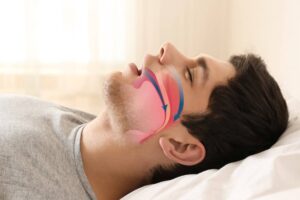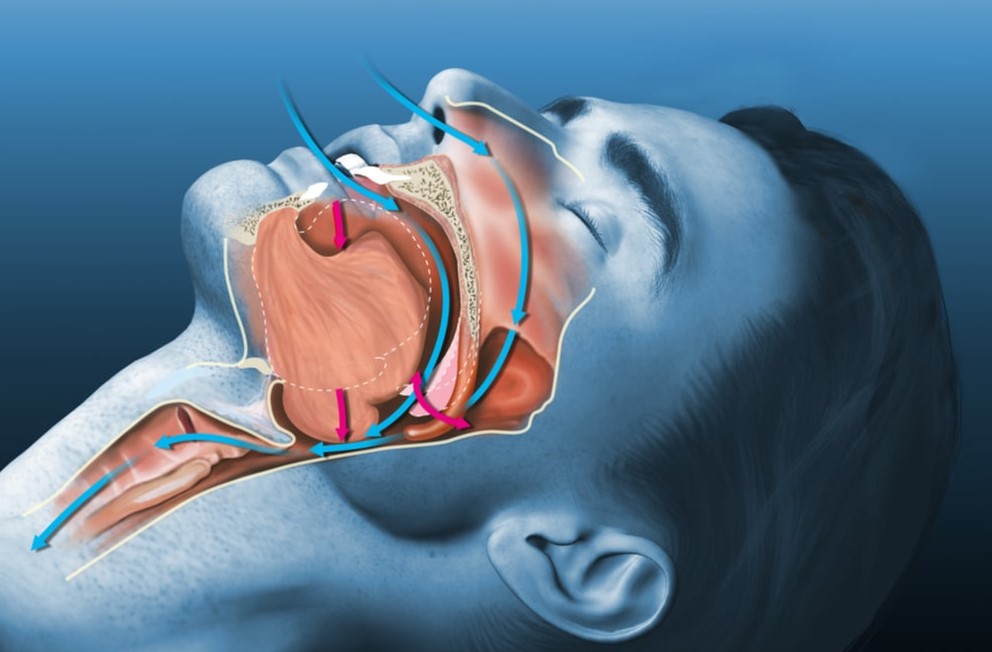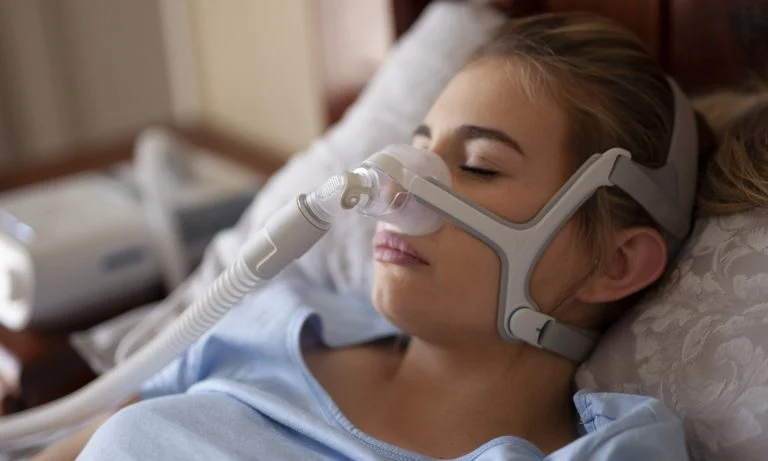How to Silence Sleep Apnea

Sleep apnea is the temporary interruption of breathing while someone is sleeping, while obstructive sleep apnea is sleep apnea severe enough to wake a person up. Obstructive sleep apnea is a common sleep disorder that occurs in nearly one-third of men and nearly one-tenth of women. However, according to Simpli Dental, sleep apnea can affect people of all ages, including babies, children, people over the age of 50, and those who are overweight.
Obstructive sleep apnea occurs when the muscles in the back of your throat relax too much to allow normal breathing. When these muscles relax, your airway constricts, and your breathing is hampered. If this constriction is bad enough, the body wakes itself up to prevent asphyxiation.
These brief moments of waking up can result in an audible snorting, choking, or gasping sound. This pattern can repeat itself several times per hour, all night long. This can prevent your body from reaching the deep, restful phases of sleep, and cause insomnia, morning headaches, irritability, difficulty paying attention, increased heart rate and blood pressure, as well as bedwetting in children. Because these moments can be brief, people with milder forms of sleep apnea may not even be aware they suffer from it.

Source: sweetsleepstudio.com
One of the easiest ways to prevent obstructive sleep apnea is to change your sleeping environment. For example, if you find you are very warm while you sleep, try using a fan to cool the air and make it easier to breathe. If you sleep with pets or other people in bed with you, consider getting separate beds. Sleep apnea can not only disturb the person afflicted with it but also disturb the sleep of others in the same household.
Dietary changes such as limiting alcohol, caffeine, and some medications can also help with sleep apnea. Additionally, even a slight weight reduction (~10%) can improve sleep apnea and reduce snoring. The use of nasal sprays can be helpful in some cases. To avoid any side effects use a steroid spray that comes with a proper dosing nasal spray pump. You can take advice from your doctor in mild cases of obstructive sleep apnea because moderate or severe obstructive sleep apnea typically require further medical treatment.
It’s also best to avoid or reduce drug depressants, such as tranquilizers or sleeping pills. Many people find that their sleep patterns normalize with no medication within several weeks of stopping heavy depressant use such as barbiturates, antihistamines or even minor pain relievers. There are many over-the-counter remedies available that can help with sleep apnea, so it’s best to ask your doctor for advice first.
Sleep apnea can also be caused by TMJ (temporomandibular joint disorder). Symptoms of TMJ include pain in the face or neck, stiffness in the jaw, clicking or popping jaw sounds, headaches, earaches, tinnitus, and/or tooth pain. Sleep apnea and TMJ are conditions that can develop together and can reinforce one another. According to the Michigan Center for TMJ and Sleep Wellness, about 75% of people with TMJ have sleep breathing disorders like sleep apnea, while 52% of sleep apnea sufferers have TMJ. Treating TMJ can also help with sleep apnea.
Mild sleep apnea may also be treated by oral appliance therapy. Oral appliances are worn as you sleep and help keep airways open by bringing the lower jaw forward or holding it in place. A dentist will fit patients with oral devices that can either be hard plastic or soft rubber to reposition their upper and lower jaws. Patients should use their devices every night for at least six months before determining if they proved helpful.

Source: smilemcleandentistry.com
If lifestyle changes and dental appliances do not solve obstructive sleep apnea, your dentist may recommend more extensive treatments such as Continuous Positive Airway Pressure treatment (CPAP). CPAP uses a mask to push air through your nose while you’re sleeping, bypassing the throat.
For sleep apnea sufferers who cannot tolerate CPAP treatment, your dentist might also recommend an oral appliance that holds the jaw forward during sleep. This helps to keep the airway open so that breathing can be regular and less disruptive.
Another alternative to CPAP is a mandibular advancement device, which is worn in the mouth to help keep airways open during sleep. These work by holding the jaw forward slightly so that there is enough room at the back of the throat to allow breathing. However, these devices may be difficult to wear as they are often uncomfortable for light sleepers.
Lastly, there are also tongue retaining devices (TRD) which are designed to keep the tongue from blocking the airway. These appliances hold the tongue in a forward position during sleep by attaching to the upper front teeth. This type of dental device may work for people who sleep on their backs. However, if sleep apnea sufferers also snore and change sleep positions frequently, using other treatments such as CPAP would be more effective than using a TRD.

Source: helpguide.org
Regardless of what method you choose, a sleep specialist will monitor how well you sleep at night with the appliance. Your sleep, snoring, and breathing patterns will also be carefully monitored to see if wearing the dental appliance has helped improve your sleep apnea. If the condition worsens when you wear the device, it might not be effective. If that happens, please talk to your sleep specialist.
People with sleep apnea who wear an oral appliance may also experience dental problems such as xerostomia (dry mouth), ulcers, increased salivation, increased tooth wear (resulting from teeth rubbing together during sleep), bleeding gums, loose teeth, decreased range of motion of the temporomandibular joint (the bone-tooth joint in front of your ear) and/or jaw pain.
If these remedies do not help with your obstructive sleep apnea, other sleep-related treatments exist too, such as uvulopalatopharyngoplasty (UPPP), radiofrequency ablation of the soft palate, or surgical treatment of large tonsils and adenoids. It is important to discuss these options with your sleep specialist.
Before using any applications or devices, it is important to remember that most sleep apnea is caused by negative lifestyle factors, such as allergies, a deviated septum, smoking, drinking, or drug use. Although lifestyle changes are more challenging to overcome, they will benefit you not only with your sleep but also with your overall health.
As always, consult your dentist or physician if you have any questions or concerns, or if your sleep apnea gets worse instead of better. Sweet dreams.
